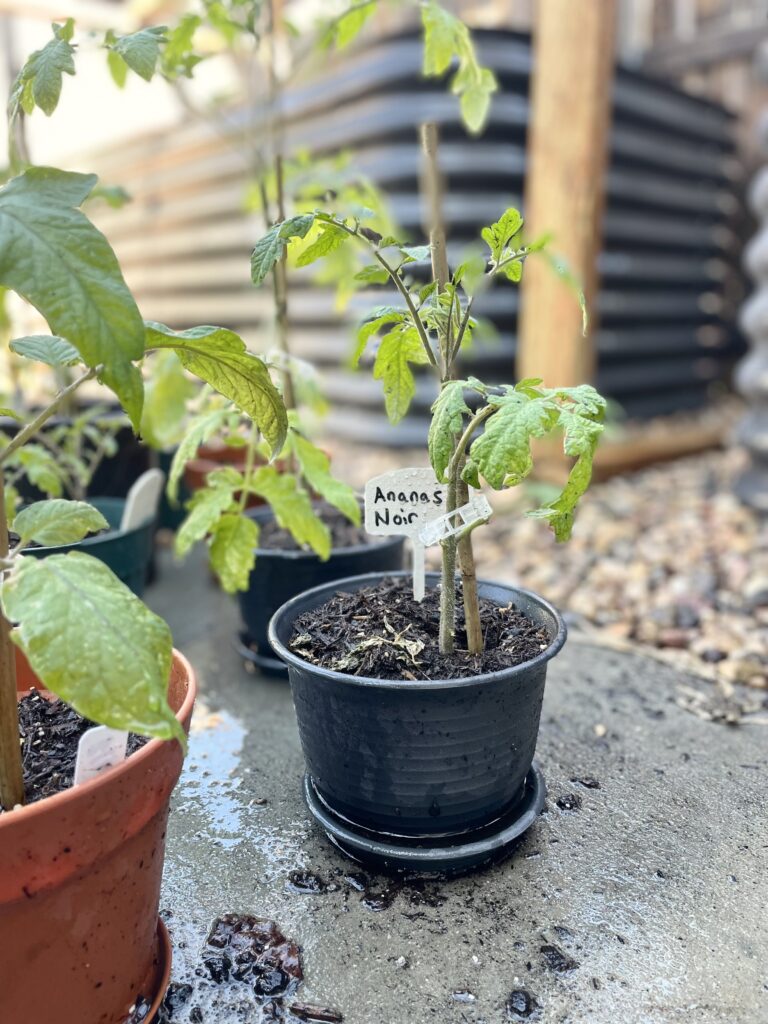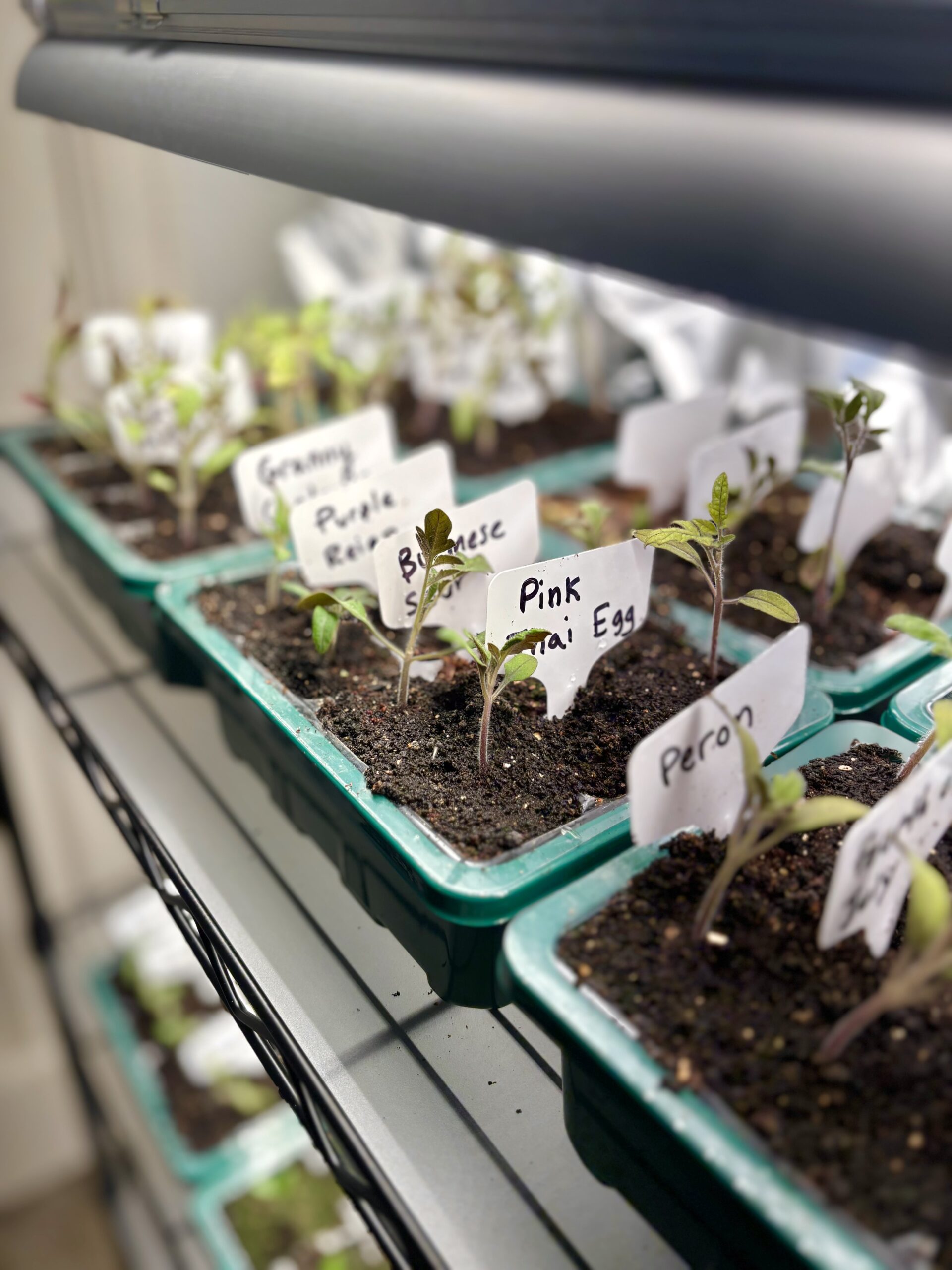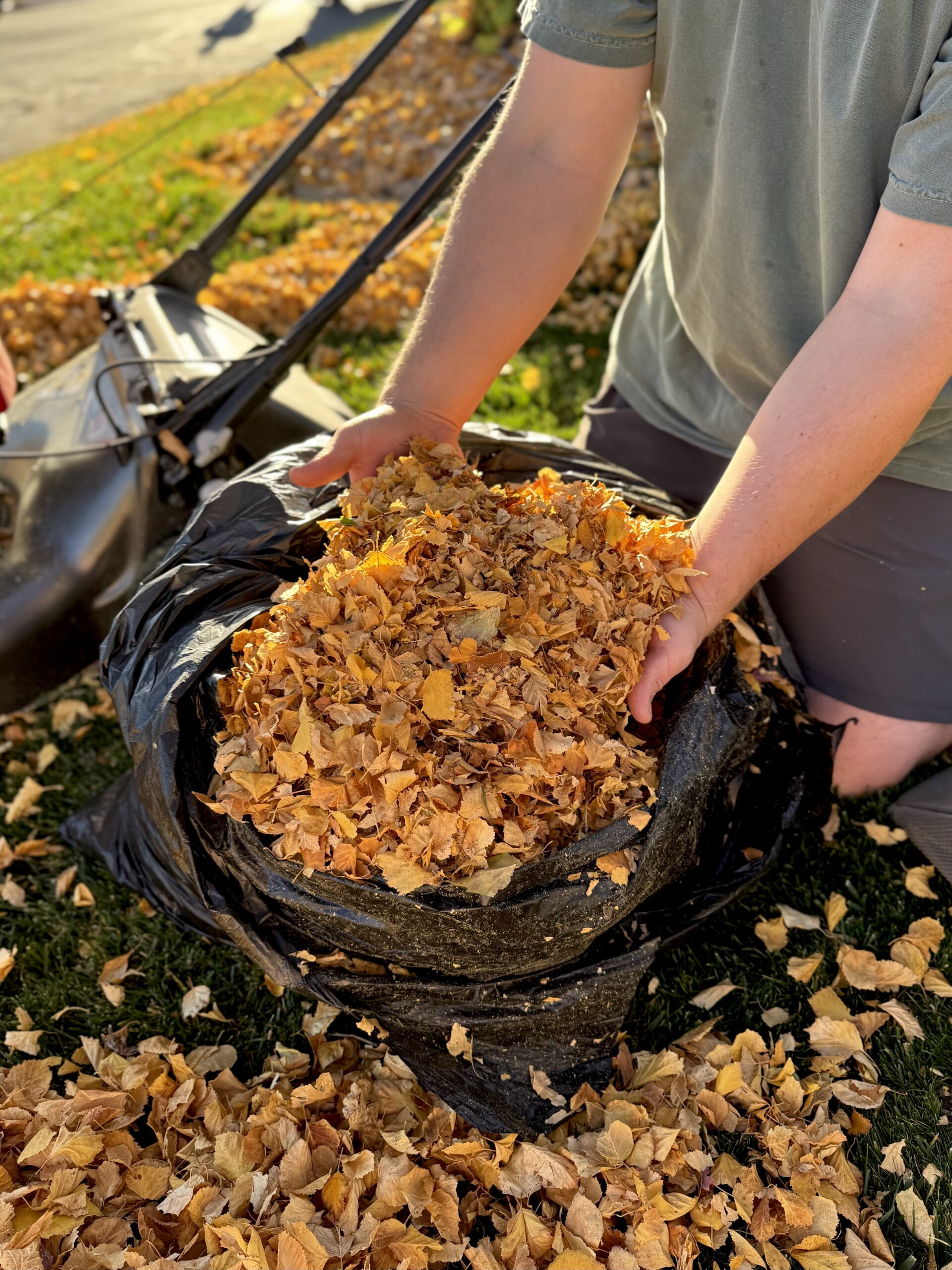Hey all! Real Farmer Jeff here.
Starting your own garden is an exciting adventure, but before you start, you will need to do some planning. One of the main reasons many gardening efforts fall short is due to lack of proper planning. In this article, I will help you start planning by going over what you need to know about:
- Seeds: Growing plants by directly planting seeds in soil and nurturing them through their entire growth cycle.
- Transplants: A young plant that has already been started from seed and grown to a certain stage of development, typically in a nursery or greenhouse, before being sold to gardeners. It looks similar to the one pictured (except disclaimer: I actually grew that one from seed myself).
Let’s get started!
Table of Contents

Starting Seeds or Buying Transplants: Pros & Cons
When starting a garden, one of the first decisions you’ll face is whether to use transplants, start from seed, or a combination of both. Each method has its own set of advantages and challenges, and the choice you make can greatly influence your gardening experience.
Transplants offer convenience and a head start, while seeds provide variety and cost savings. Some people love starting their plants from seed because they feel more gratification from experiencing the full seed to harvest process.
In my case, the real draw to starting from seed is having significantly more variety in what you can grow (I’ll touch more on variety in the section below).
But which option is right for you? Let’s dive into the pros and cons of each to help you make the best choice for your garden.

Starting Seeds
PROS:
- Variety: There’s a wider selection of plant types and unique varieties available as seeds compared to transplants.
- Control: You have more influence over how the plants are grown, including soil type, fertilizers, and growing conditions.
CONS:
- Less Cost-Effective: Starting seeds indoors often requires additional tools like seed trays, grow lights, and heating mats, which can increase costs and require space.
- You can definitely save money long term though! You can even save seeds from heirloom plants to use in the next year. FYI, this does not work with hybrid plants.
- Time-Consuming: Starting from seed requires a longer time commitment, as you’re responsible for the entire growth process.
- Skill Level: Growing from seed can be more challenging for beginners, as it requires more knowledge of plant needs.
- Limited Growing Season: In regions with short growing seasons, starting from seed can be more difficult (unless you start indoors early like I always do), or choose fast-growing plants.
Buying Transplants
PROS:
- Time-Saving & Convenient: Transplants are already partially grown, thus requiring less time than starting from seed.
- Higher Success Rate: Transplants are more established than seeds, making them hardier and better able to withstand early challenges like pests or weather.
- Early Identification: You can choose strong, healthy plants when buying transplants, avoiding the uncertainty of germination success.
CONS:
- Limited Variety: The selection of transplants at nurseries is often narrower than the options available as seeds.
- Dependency on Suppliers: You rely on nursery availability and timing, which may not always align with your plans or preferences.
- Less Control Over Growth: Transplants may have been grown in conditions or with chemicals you might not prefer, reducing your control over how your plants are started.
The Variety of Options When Starting Your Garden from Seed
Starting from seed opens up a world of possibilities for your garden, offering far more variety than what you’ll typically find at a local nursery. When you shop for seeds, you can find an extensive range of options, including heirloom varieties, rare plants, and unique hybrids that cater to specific tastes and gardening needs.
Whether you’re looking for purple carrots, striped tomatoes, or vibrant zinnias in uncommon colors, something about growing varieties that you can’t even find at a local farmers market is so cool to me. Also, if the world goes to crap it is nice to know you can grow food from your own seeds lol. It is a legit skill!
Fun fact: did you know that 10,000+ varieties of tomatoes exist in the world, but how many do you see where you buy produce? Probably 4, maybe 5ish max. Supermarkets often carry certain fruits and vegetables simply due to convention, or because they are more sturdy than other varieties and can therefore handle transportation better.
Similarly, many garden centers don’t have more than ten varieties of tomatoes for logistical reasons. Most of the time, options are limited to hybrid varieties that are more disease and drought resistant. Luckily, when you are starting from seed, you can prioritize what tastes the best or seems the most exotic and interesting to you!

What I Would Recommend For Your Situation
I personally like to start my plants from seed and then buy transplants later in the season if I am low on time (which is rare). Because I live in Utah, where the climate is quite cold in February/March, I start my tomatoes indoors during that time since they take so long to grow (normally 60-100 days). This way, they are ready for harvest by July. With something like cucumbers, I start them outdoors when the weather warms up 1-2 months later.
If it is your first gardening season, I recommend buying transplants so that you have an easier path to your first harvest! For anyone who already feels comfortable with gardening or who is feeling adventurous, it is worth it to start from seed! Even if you just try one or two varieties.
Here are some of my seed recommendations (click on each for a link to my recommended products):
- All the basic plants in one pack for a great price
- Tomato Pack
- MiGardener: This site has many affordable seeds
- Rare Seeds: Awesome selection of varieties. Definitely my favorite packaging of any seeds (which is nice to remember what you are growing haha)
- Finally any up and coming seed company is also worth a try because they usually charge less than half of the biggest name brands and still have good quality.
Best of luck in you gardening adventure – just remember to stay consistent, be patient, and give your plants lots of love!
If you enjoyed this article, make sure to check out my other blog posts:








There is no shame in buying transplants, but I also enjoy starting seeds to have more variety!
The pros and cons layout was super helpful for planning out timing and cost.